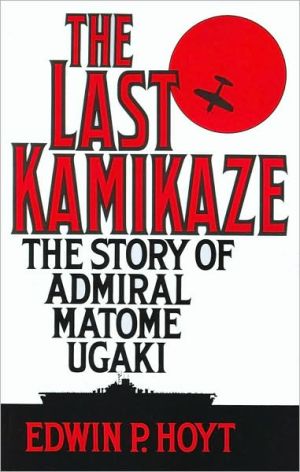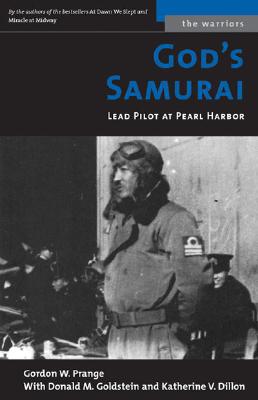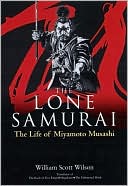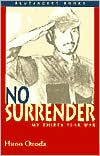The Last Kamikaze: The Story of Admiral Matome Ugaki
This is the story of a man and a Navy--Vice Admiral Matome Ugaki and the Imperial Japanese Navy. By 1945 the Imperial Navy was physically destroyed and Admiral Ugaki was given the task of defending the Japanese homeland against attack, and he sent hundreds of kamikazes against the American naval forces operating around Okinawa. After Emperor Hirohito announced Japan's surrender on August 15, Ugaki stripped off his insignia of rank, climbed into a torpedo bomber, and flew to Okinawa, where he...
Search in google:
This is the story of a man and a navy, and their shared death wish--Vice Admiral Matome Ugaki and the Imperial Japanese Navy. In 1945, both achieved their wish, with enormous cost to the people of Japan. Publishers Weekly Vice Admiral Ugaki served as chief of staff to the legendary Admiral Isoroku Yamamoto, commander of the Combined Fleet, until Yamamoto was killed in an aerial ambush in 1943. Ugaki, who was himself wounded in the attack, later was appointed commander of the First Battleship Division, remaining in that position until the battle of Leyte Gulf. He was then charged with directing the aerial defense of Japan, oriented around the untried Kamikaze Corps. Hoyt ( Japan's War ) bases part of his narrative on Ugaki's terse but revealing war diary, which the admiral called ``Seaweed of War.'' Often poetic and abstract, the diary nonetheless conveys Ugaki's stoic struggle to prepare himself for defeat and death even as he sent waves of suicide missions into the air against the Americans. Resolved to follow his young pilots to certain death, Ugaki flew a kamikaze mission within hours of Japan's surrender on August 15, 1945, and was never heard from again. A strange, stirring tale, sympathetically related from the Japanese point of view. (Mar.)
IntroductionPreparing for Pearl HarborPreparing the Attack on Pearl HarborThe Attack on Pearl HarborVictoriesIn the Coral SeaThe Battle of MidwayStarting OverGuadalcanal DisasterTurning Point: GuadalcanalThe Illusion of Air PowerThe Death of an AdmiralSeeking the Decisive BattleThe End of PowerThe Fifth Air FleetThe Hope That FailedFalling Like Cherry Blossoms into the SeaOperation Ten GoThe Long SummerThe Last KamikazeAfterwordSelected Bibliography
\ From the Publisher"An insider's intriguing perspectives on an ill-starred belligerency, plus savvy commentary and continuity from a veteran military historian."\ -\ Kirkus Reviews\ "A strange, stirring tale, sympathetically related from the Japanese point of view."\ -\ Publishers Weekly\ "Hoyt, a noted author and historian who specializes in Japan, China and the War in the Pacific, uses the personal diary of Vice Admiral Matome Ugaki to document the eventual destruction of the Japanese Navy at the hands of Allied forces throughout World War II. The author begins by detailing Ugaki's role in the preparation and planning of the attack on\ Pearl Harbor, and then provides this officer's insights into such battles as Midway and Guadalcanal. Military historians will appreciate this insider's perspective into the collapse of the Japanese military and its eventual surrender, which culminates in Ugaki's final kamikaze mission against the wishes of Emperor Hirohito."\ -\ Reference & Research Book News\ \ \ \ \ \ Publishers Weekly\ - Publisher's Weekly\ Vice Admiral Ugaki served as chief of staff to the legendary Admiral Isoroku Yamamoto, commander of the Combined Fleet, until Yamamoto was killed in an aerial ambush in 1943. Ugaki, who was himself wounded in the attack, later was appointed commander of the First Battleship Division, remaining in that position until the battle of Leyte Gulf. He was then charged with directing the aerial defense of Japan, oriented around the untried Kamikaze Corps. Hoyt ( Japan's War ) bases part of his narrative on Ugaki's terse but revealing war diary, which the admiral called ``Seaweed of War.'' Often poetic and abstract, the diary nonetheless conveys Ugaki's stoic struggle to prepare himself for defeat and death even as he sent waves of suicide missions into the air against the Americans. Resolved to follow his young pilots to certain death, Ugaki flew a kamikaze mission within hours of Japan's surrender on August 15, 1945, and was never heard from again. A strange, stirring tale, sympathetically related from the Japanese point of view. (Mar.)\ \ \ Library JournalAdmiral Ugaki held several important posts in the Imperial Japanese Navy during World War II and died leading a kamikaze attack on the day of the Japanese surrender. Ugaki's wartime diary has recently been published under the title Fading Victory ( LJ 6/91), edited by Donald M. Goldstein and Katherine V. Dillon. Hoyt, a prolific military historian, has used the original diary and other sources to write a survey of the Pacific War from Ugaki's perspective. Weaknesses in Hoyt's book include a redundant style and factual error concerning the Guadalcanal campaign, which has been called the turning point of the Pacific War. In addition, Hoyt's figures for the number of American cruisers participating and lost in this battle are wrong. Hence, this book is not recommended. For another view on Hoyt's work, see the review of Warlord , p. 84.--Ed. --Robert Andrews, Duluth P.L., Minn.\ \








